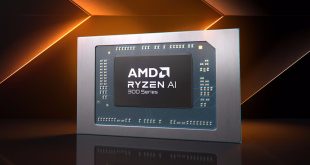We've all watched the Olympics. How many times have we seen a close-fought race end in a new world record? How many times have we seen one person completely dominate an event, only to pull up before the finishing line and miss smashing the old record by a big margin. Unless you're being seriously pushed, what's the motivation to carry on running full speed? KitGuru takes its marks, gets set to analyse the facts and goes as far as saying “Intel must be so happy with the recent process issue revelations”.
If you map the development of the computer back to 1965, you will see that Intel golden boy Gordon Moore was pretty accurate when he said that transistor packing rates on a chip will double every 2 years.
So what are the challenges for lithographers – modern day silicon scratchers?
Well the first serious problem came just before the 1999 launch of the 180nm Coppermine-E versions of Intel's Pentium III. Up to that point, transistors had been the struggle, but with the advent of 180nm technology – it was the interconnects that provided the biggest challenge. It's sort of like finally releasing a really cool phone, but then realising that your severely bandwidth limited on the network [Not 100% on the analogy, but we see where you're coming from – Ed].
The second problem started just before the interconnect challenge and it's something that we're still living with today. The wavelength of light being used to pattern a feature is bigger than the feature being patterned. In simple terms, this means you need to produce a delicate line drawing of the Mona Lisa, but all you have available are Crayola crayons.
Given that Intel does not want to fall foul of the monopoly laws, it needs AMD et al to have a certain proportion of the chip market. With the Tick Tock in full effect, minor bumps in AMD's road map don't seem strong enough to keep pace. Sure, the latest APU products are a handful – but only if AMD manages to market them properly. Otherwise, for mainstream and high-end processors, Intel's lead is quite scary.
On that basis, there must be some in Intel's hierarchy that are relieved to hear the conclusions coming out of the 2012 International Symposium on Extreme Ultraviolet Lithography. Namely, that there will be big issues moving down from 22nm through to 14nm.
So when is that move scheduled? Well, the technology move from Ivy Bridge to Haswell, for Intel, is scheduled for Q2 2013 and the company hoped to move to 14nm Broadwell by the following summer (2014). But the reality could well be different. Meaning either a slip to 16/17nm or allowing the launch schedule for Broadwell to move into the 2015/16 time frame.
What is the challenge? Creating chips at the 14nm level will take an enormous amount of power. Although lithography science has been patting itself on the back that it's managed to deliver a 20x increase in the power of light used, over the past 3 years – it seems that another 20x increase is needed to be sure of the 14nm process. And that kind of power can't be relied on until closer to 2016.
The problem here is that Intel's Head of Process Technology, Mark Bohr, told IDF that everything was on track to release 14nm into full manufacturing for the end of 2013. Specifically, “The 14-nanometer technology is in its full development phase and it's on track for production readiness around the end of next year”. But the EUV Symposium was extremely doubtful that the correct light sources will be ready in time.
Moore's Law isn't a law as such, more an ‘observation that fits what we see' for a few decades. Any change to the Tick-Tock strategy means a slip in that ‘law' – and it could well suit Intel.

KitGuru says:While Mark Bohr and the EUV Symposium seem to have fundamental problems reconciling their timelines, Intel's hierarchy must be rubbing their hands together. Right now, if no one changes anything, Intel has the line-up it needs to maintain market share against AMD – without any more FAB updates. Once the move to Haswell happens in Q2 2013 happens, there's very little need for the CPU company to move on again. If the issues highlighted by the EUV Symposium are found to be genuine, Intel might be able to run out Haswell for a lot longer than previously anticipated – or accept that 14nm was not a possibility and settle for 15 or 16nm. Overall outcome is likely to be increased Stability. Now THAT's what $50Bn corporations like.
Comment below or in the KitGuru forums.
 KitGuru KitGuru.net – Tech News | Hardware News | Hardware Reviews | IOS | Mobile | Gaming | Graphics Cards
KitGuru KitGuru.net – Tech News | Hardware News | Hardware Reviews | IOS | Mobile | Gaming | Graphics Cards



I’ve often thought a slower cadence of process shrinkage would be a good thing.
Perhaps it would force chip designers to focus more on innovation and better designed chips rather than just cramming more transistors in there to gain the increased performance.
As it stands currently a process has hardly had time to mature before the next one is rolling out.